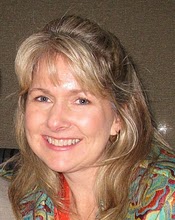For part 1 of my outlining debate, I looked at my process and how it has evolved during the writing of my novels. For the rest of this week, my guests will be discussing the same thing from their perspectives. And do I have some awesome guests. Coming later in the week are Nikki Loftin, Bethany Hegedus, Jessica Lee Anderson and P.J. Hoover.
Today, I have Donna Janell Bowman, who writes nonfiction pictures books (although I know she has a couple novels in her). Here are Donna’s answers to my questions about her process.
How do you start a new book?
Sometimes, I believe the late New York sportswriter Walter “Red” Smith when he proclaimed, “There’s nothing to writing. All you do is sit down at a typewriter and open a vein.”
Most of the time, beginnings are like mud pits that separate me from the story. I jump in, discover I’m in the wrong place, then try like the dickens to heave my boots out of the bog. I’ll rinse and repeat until I finally surrender to the fact that I should not start my project at the beginning, but trust that the story tracks will reveal it during the writing.
Did your process evolve, and/or how did you come up with your process?
Hmm, good question. Part of it is simply intuitive. Every writer has his/her own style and creative process. The first piece I ever had published was a short story I had written for a creative writing class. My assignment was to choose 10 words from a lengthy list and use them in a story. Though far from an outline, I enjoyed having something concrete to hang the story on, a jumping off point akin to a certain secret word known only to a segment of the Austin writing community (wink!).
Since then, that challenge has evolved into my “story points,” a loose list of important details to be addressed in the story. In fiction, something whispers to me, demanding to be paid attention to. Maybe it’s a memorable character, plot or setting. Most often, I know the ending before the beginning. By plugging the destination into my writer’s internal GPS, while keeping an eye on any story points I already know, I allow myself to take those detours that lead to surprises, like the biggest ball of yarn in the world. Those surprises make fiction come to life.
Do you outline or write more by the seat of your pants?
I’ve hinted at it earlier, but here’s where I stand up in front of the room and profess; Hello, my name is Donna Bowman Bratton and I am an outliner. Alas, there is no twelve-step program for my condition. Though I love getting into the car for spontaneous road trips to serendipitous locations, I cringe at the thought of not having a plan when setting out on a new writing project, though the extent of my planning is determined by the genre.
I write a great deal of nonfiction, which requires research and historical accuracy. When dealing with the literature of fact, a more structured outline must be in place before the first word hits the page. After all, nonfiction dictates that I can’t make anything up, so writing by the seat of my pants is out of the question. When I write for newspapers and magazines, I use a loose outline. And, while working on nonfiction chapter books, I outline each chapter in detail in advance. Doing so gives me a peek at the logic and arc of the project as a whole, which helps in shaping the material into a story form. Having this road map, of sorts, helps me avoid the detours that would otherwise be welcomed in fiction.
But, when I write nonfiction picture books, I look at the project in an entirely different way. The picture book audience is younger. They want to hear a story. A chronological approach can feel stiff and boring. So, my outline morphs into my story points with a one-line summary of the overall premise followed by factual heartbeats and important details that I want to include in the text. By mulling over my bulleted list, rearranging the order like puzzle pieces, I’ll eventually find the narrative thread that ties the story together in a, hopefully, creative way.
By the time I finish a project, I’m grateful for the pre-planning that launched me into the muddy, sticky, puzzling journey.
Awesome, Donna!
So, are you an outliner or more seat of the pants?
Tune in tomorrow to hear from Nikki Loftin.








4 Responses
I’m going to love this thread on outlining. I enjoyed hearing your process. Thanks so much for including me, Sam.
Dang girl, Time to go pluck a vein and write. Very inspirational and why outlining can be a very useful tool. Thanks, Donna and Sam!
Thank you Sam and Donna for your insights into your writing process. It’s a question I think about a lot.
Our pleasure, Bonnie. Make sure you check out the rest of the series.